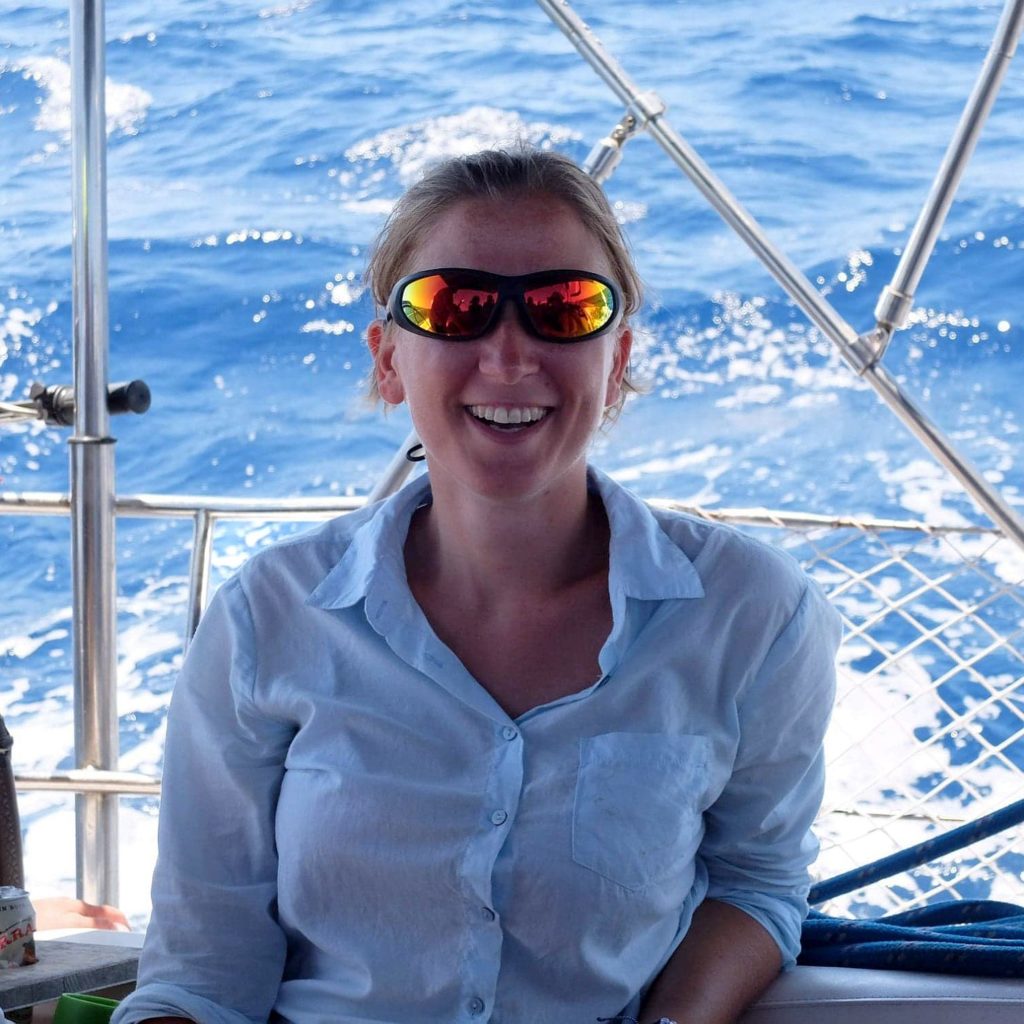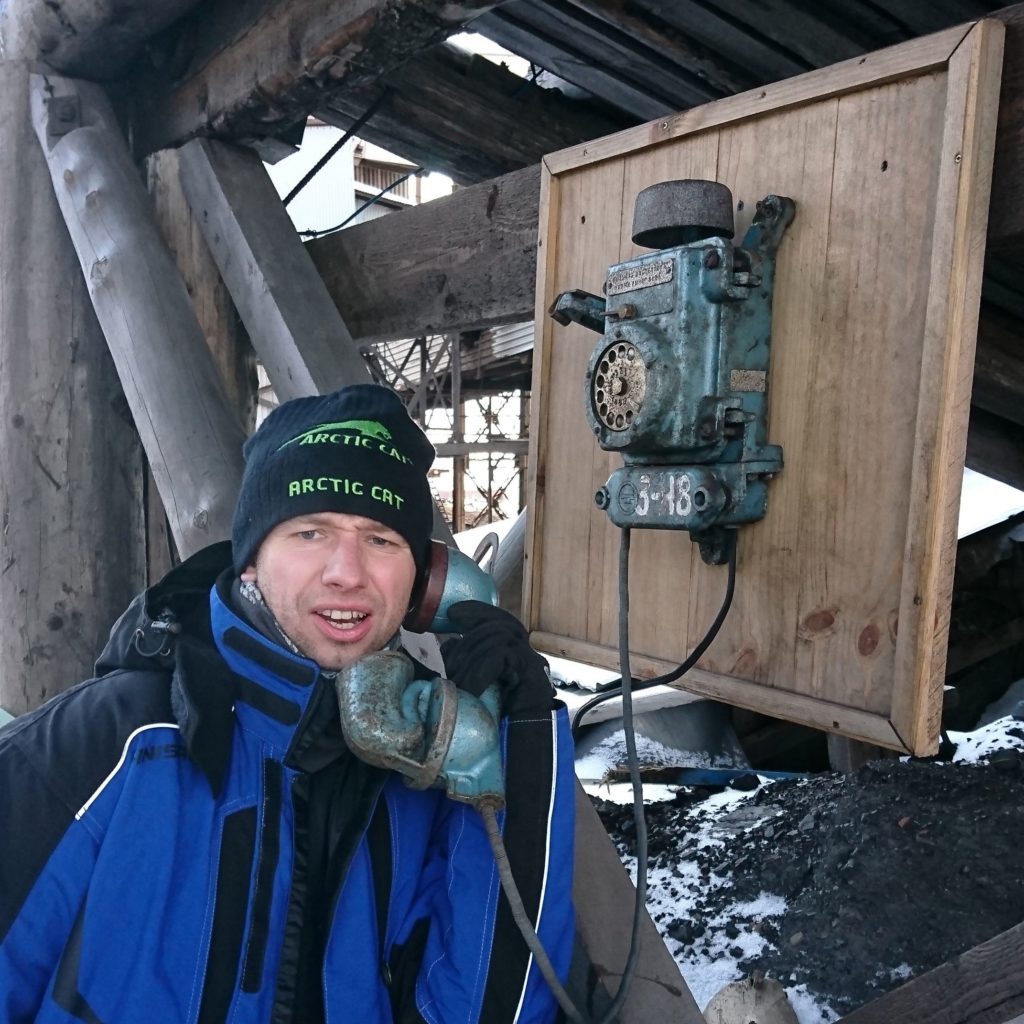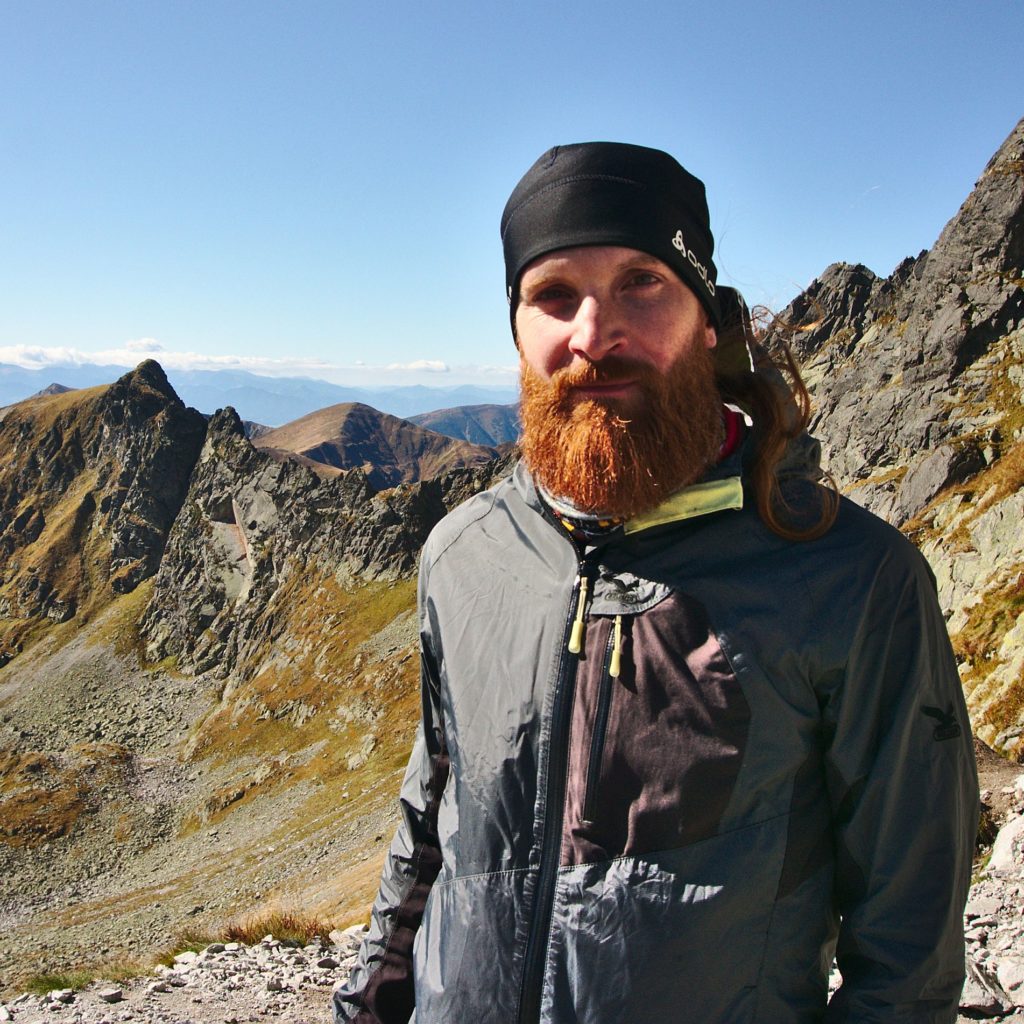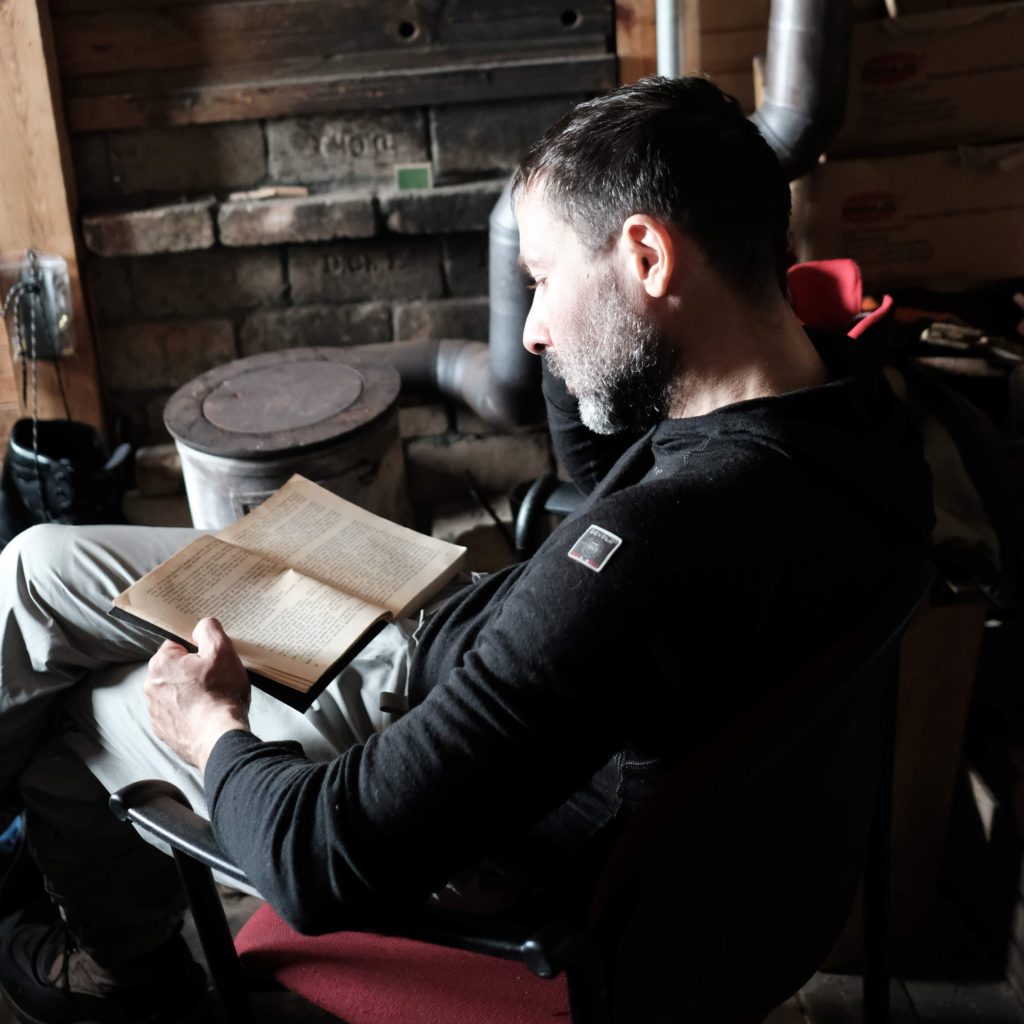In mid-February, a remarkable meeting – or, more specifically, two remarkable meetings! – took place among the peace and quiet of Kampinos National Park, providing us with an opportunity to meet the ten candidates whose applications appealed to us the most.
It is hardly surprising that our base was an old wooden cabin, without electricity, running water or a toilet. There wasn’t too much space or any kind of sleeping infrastructure either, but there was a wood stove, a large pot of bigos1Bigos, often translated into English as hunter’s stew, is a traditional Polish single-pot dish of chopped meat of various kinds stewed with sauerkraut and dried mushrooms. It is served hot on cold days and makes everybody think of Christmas. and an amazing atmosphere. The original plan was to have one two-day meeting, but ultimately – in an attempt to provide everyone with a minimum of comfort and an opportunity for interactions going beyond forever stepping on each other’s toes – we decided to divide the group into two.
The weekend turned out great, which did not make our choice any easier. Unfortunately, accepting everybody simply wasn’t an option, so choose we did. As a result, the project team was joined by the Magnificent Four, whose field experience, practical expertise, personality and that elusive quality we shall call the vibe best matched our expectations.
So now, without further ado, let’s make the introductions!
We’re convinced that – with the help of Kasia, Artur, Paweł and Krzysiek – the second round of fieldwork will be an absolute success! For now, though, we keep a close eye on what’s going on in the world, hoping that the situation will soon improve, life will go back to normal, and the six of us will finally be able to start packing. Wish us luck!

KASIA FILIMONOW
A lover of nature and sea enthusiast (the Mediterranean, the Baltic and the North Sea) with a certain fondness for the mountains. Often accused of excessive optimism, she dismisses the accusations claiming it’s just the way she is. She loves cooking, no matter the conditions, and feeds everyone who happens to be around. The life and soul of every party.
Kasia has been in love with Svalbard since 2018, when she visited Petuniabukta Polar Research Station as part of a conference organised by Adam Mickiewicz University in Poznań. Once she had seen what fieldwork is like in Svalbard and learnt more about the local fauna, flora and geology, her initial attraction turned into deep fascination, great respect and a strong desire to protect this extraordinary place. This is why she decided to contact us! She thought – and rightly too – that, with her experience in data collection and analysis, she could make a valuable contribution to the project and, by the same token, do her bit to protect Svalbard’s natural beauty.
As a professional embryologist, she tries to unravel the mystery of life and figure out how a single cell gives rise to a wide range of cells and how they all know what to do to form a functional organism. Studying cells, however, does not create too many opportunities for protecting the natural environment, which prompted Kasia to leave the lab and join us on the littered Arctic coast. Can lab experience come in handy in Svalbard? It sure can! Kasia knows, among others, how to work under sterile conditions and suture a wound.
She believes that everyone, regardless of their profession, is responsible for the world we live in, the world we can’t effectively protect without realising our errors and finding ways to correct them. As a scientist, she particularly appreciates the Foundation’s mission.
WHO’S NEXT?

ARTUR ADAMEK
Ever since he was a child, he’s been driven by curiosity about the world and the need for diversity. An innate bent for science and research led him to Spitsbergen, which he visited for the first time in 2003. It was there – while crossing glaciers, inspecting glacial caves and exploring local waters – that he gradually built up extensive outdoor experience.
In 2005 he overwintered at the Polish Polar Station Hornsund as a member of the 28th Polar Expedition of the Institute of Geophysics Polish Academy of Sciences (IG PAS). As the first full-time geodesist at the Station, he conducted year-round monitoring of the Hans Glacier. Some time later, he completed a course in polar engineering at the University Centre in Svalbard (UNIS). He has taken part in numerous spring and summer polar expeditions, often alongside outstanding scientists. For years he was involved with the Faculty of Geodesy and Cartography at the Warsaw University of Technology, where he first tried his hand at speleology and ice climbing.
Over the past four decades, he’s gained many useful skills and certificates. He is a diver, free diver, motorboat helmsman, sports shooter, you name it. He learnt the basics of long-distance shooting under the careful supervision of JW GROM special force snipers and kept going back for more advanced trainings. His skills will surely help him scare away potentially dangerous polar guests, without doing anyone any harm.
What does he do for a living? He owns a company which provides laser scanning services and creates mobile measurement systems based on 3D laser scanning technology. The objects he has scanned include, among others, Spitsbergen glaciers, which quite clearly hold a special place in his heart. It is out of concern for the state of his polar home that he will lend us a hand with the project.
WHO’S NEXT?

PAWEŁ LEWANDOWSKI
His unusual life story constitutes a rich source of experience that might well prove useful in the Arctic. Having graduated in statistics and econometrics, he had a sneaky feeling that office work would not be his thing. A lucky twist of fate and his climbing skills helped him get a job in Gdynia Shipyard, where he worked for several years as a rope access technician. He liked the job, hard though it was, but – wanting to develop in the field of art and craftsmanship – he turned his attention to knife making. This, in turn, inspired him to go back to school. He graduated from the Design Faculty at the Academy of Fine Art in Gdańsk. His diploma project – HUBA tree tent, which he conceived and created on his own – became his ticket to a career in outdoor equipment design.
Paweł has wide experience in winter mountain sports. He does climbing and skiing, takes part in extreme orienteering competitions, and has sailing and diving certificates. Behind the wheel of his beloved Suzuki Samurai, he’s taken part in numerous off-road events. He has also completed military service as a tank commander!
The primary motivation behind his application, however, was his starting out on a career in product design. As he himself puts it,
It is a duty of everyone in this profession to design new products responsibly in order to protect the planet and slow down the rate of environmental degradation as much as possible. I hope that taking part in Sørkapp Marine Litter Cleanup will deepen my sensitivity to the problem and inspire me to create something useful for the world. Working on the project will sure be a great adventure, but to me it has that additional, deeply humanistic sense.
WHO’S NEXT?

KRZYSIEK PEŁKA
As a child he wanted to become a Superhero, then a great thinker, and now… he still can’t make up his mind.
On a daily basis, he works with numbers as a media analyst, but it’s not his professional know-how that got him a place in our team. It was his polar experience, gained during land and sea expeditions, two of which led to the Arctic and four – to the Antarctic. One of the latter was the famous expedition to the Ross Sea, during which he reached the southernmost point ever to be reached on a yacht (78 44’ S) and climbed an Antarctic volcano known as Mount Erebrus (3 794 m a.s.l.). The many months spent at sea have taught him to effectively function in a group in a limited space and severe weather conditions. Such skills will no doubt prove useful in Palffyodden!
He has completed military, aeronautical and philosophical training, as well as courses in climbing, glacier safety, diving, and sea rescue. There is no subject on Earth he couldn’t garnish with a joke.
What made him contact us about Sørkapp Marine Litter Cleanup?
An opportunity to spend a few weeks in the pristine wilderness of the Arctic is never a thing to be missed. But to me this project carries a particular value. Due to its ecological character and the real, positive impact it has on the Arctic environment, I treat it as a way of paying back my debt. Every time I travelled to the polar regions, I drew extensively on what they have to offer. A sense of perspective, calm and humility I found there gave me a lot of strength later on, in my daily life. The metaphysical polar magic must be preserved and, by taking part in this project, I want to do my bit to make it happen.
WHO’S NEXT?
Cover photo: Kampinos National Park © Mariusz Cieszewski






